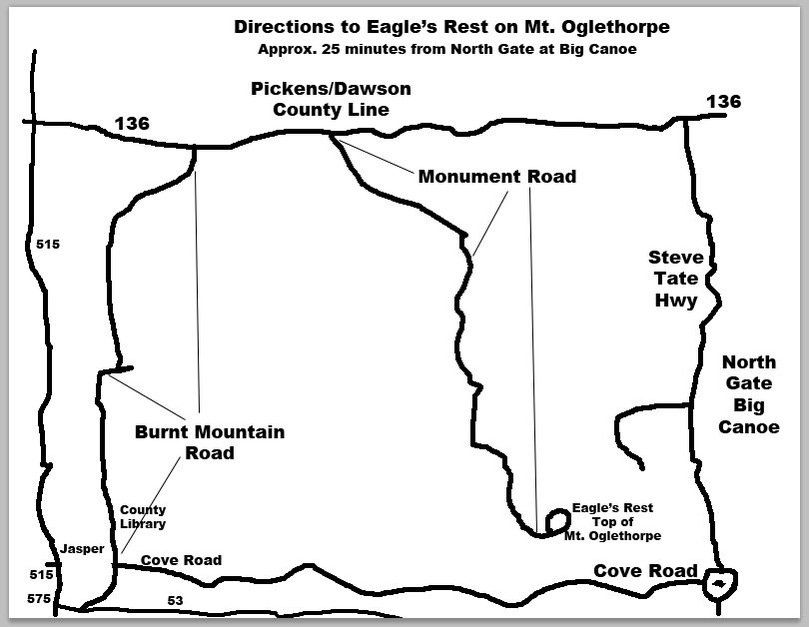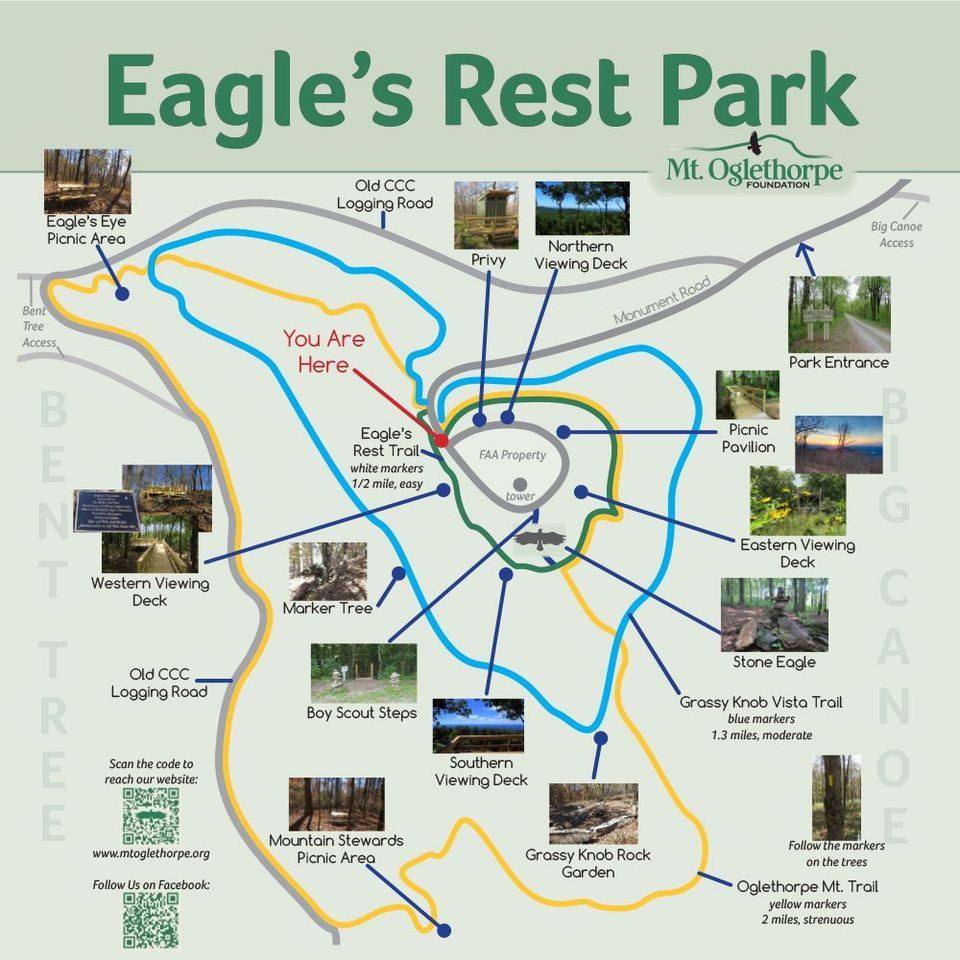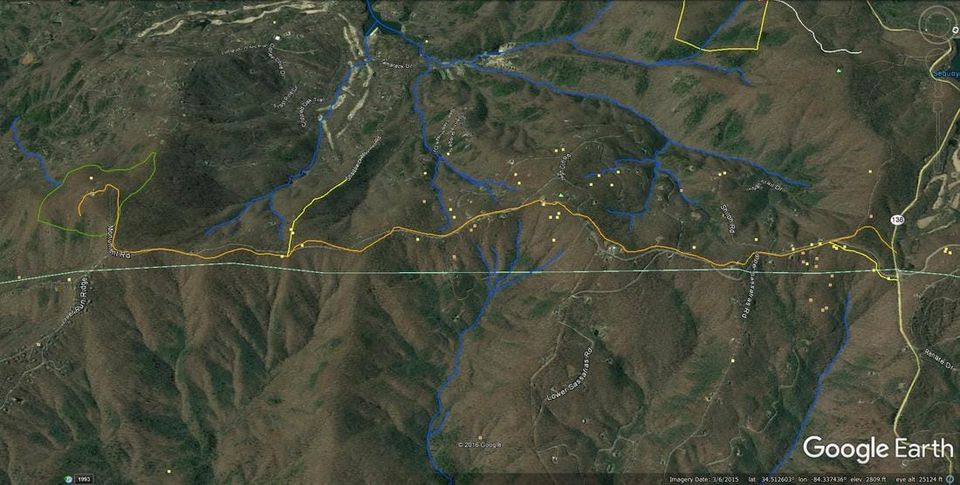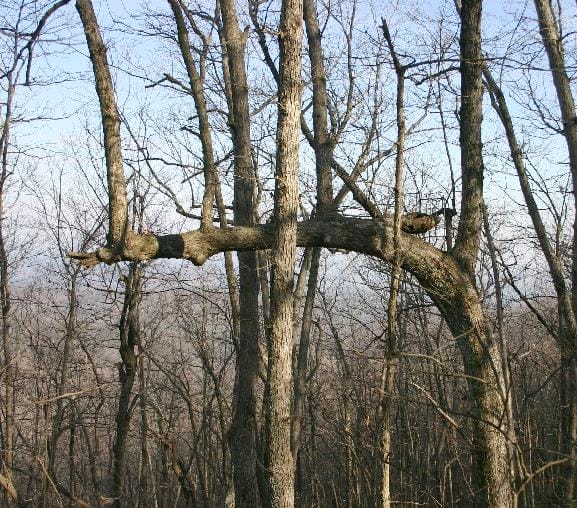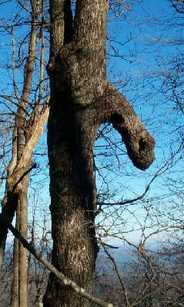Hiking Trails
ACCESS TO TRAILS
Follow Rt. 136 to Burnt Mt. and turn south on Monument Road. Follow Monument Road to the very end (about 5 miles) and enter the Eagle’s Rest site. Drive up the hill to the parking area with the kiosk on the left. The trails start behind the kiosk.
The Oglethorpe Mt. Trail begins at the same location as the Eagle’s Ridge Trail and follows that trail around the mountain to the east and then south for ¼ mile. On the south side of the mountain, the Oglethorpe Mt. Trail branches off to the south and heads down the mountain ridge before turning back to the west making the 500 foot elevation drop. In ½ mile, the trail will come to a short trail that leads to a picnic table and the triple springs where the hiker can rest.
From the double springs, the trail continues to the west for 0.1 mile to reach the old CCC Road where the trail turns north (to the right) and follows the CCC Road for ½ mile to the next turn. Where the CCC Road makes a 90 degree turn, the trail will also turn back to the east and head up the mountain for a 1/3 mile to the trail starting point. Near the turn from the CCC Road is another picnic table for resting before completing the trail to the top of the mountain.
Hiking boots are recommended for the Oglethorpe Mt. Trail.
Seasonal wildflowers and native azaleas can be seen along the trails.
As you enjoy this special place we, the Board Members of the Mt Oglethorpe Foundation ask you adhere to these simple rules and regulations:
- Leave only footprints and natures gifts for others to enjoy.
- No firearms
- No Horses or Four-wheelers on the trails
- No Fires of any kind
- No Alcohol
- Please take your throw-a-ways home with you
Oglethorpe Mt. Trail:
This trail is approximately 1.8 miles long with a 500 foot elevation change down and back up. The trail is rated moderate to strenuous depending on your hiking skill level and should only be hiked by seasoned hikers accustomed to longer hikes. Follow the yellow blazes.
When you visit the site, if you can, bring a rock to place in the Eagle Sculpture being built on the southern end of the top of the mountain.
Legend:
Distance ~ .5 mi
Difficulty: Easy
Eagle's Rest Trail:
This trail is relatively level with minor elevation changes. Oglethorpe Mt. trail circles the top of the mountain in a clockwise direction, returning back to the parking area. The trail is ½ mile. Follow the white blazes.
Legend:
Distance ~ .5 mi
Difficulty: Easy
Legend:
White: Eagle;s Rest Trail
Yellow: Oglerthorpe Mt Trail
Blue: Grassy Knob Vista Traill
Green: Property line

